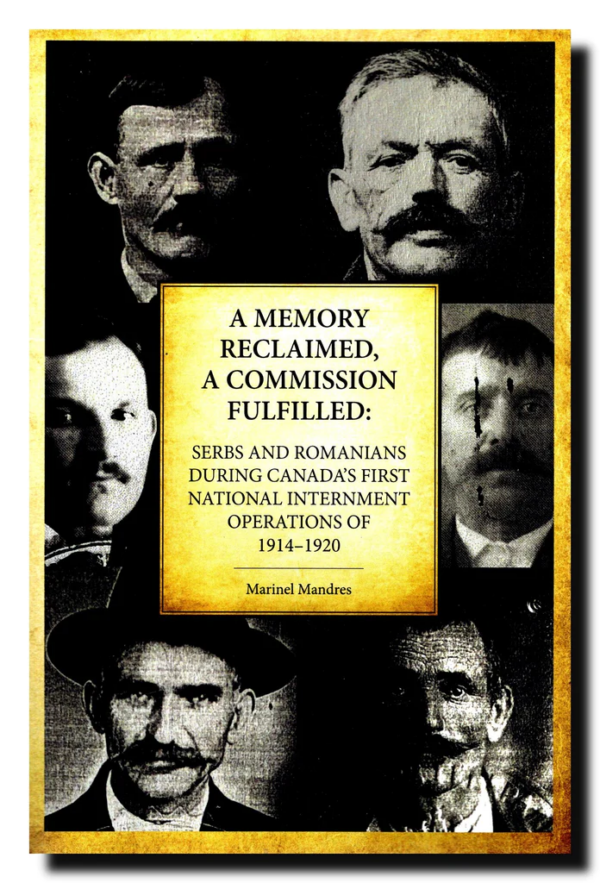 Knjiga dr Marinela Mandreša “Povratak sećanja, ispunjeno obećanje: Srbi i Rumuni tokom Prve kanadske nacionalne operacije interniranja 1914-1920” (A Memory Reclaimed, A Commission Fulfilled: Serbs and Romanians during Canada’s First National Internment Operations of 1914-1920, Kingston: Kashtan Press, 2022) je jedna vrsta molitve koja osigurava da internirci i njihova patnja za vreme Velikog rata imaju večan spomen.
Knjiga dr Marinela Mandreša “Povratak sećanja, ispunjeno obećanje: Srbi i Rumuni tokom Prve kanadske nacionalne operacije interniranja 1914-1920” (A Memory Reclaimed, A Commission Fulfilled: Serbs and Romanians during Canada’s First National Internment Operations of 1914-1920, Kingston: Kashtan Press, 2022) je jedna vrsta molitve koja osigurava da internirci i njihova patnja za vreme Velikog rata imaju večan spomen.
Crkveniparastosiimolitve nas uče da trebamo dapamtimo,dasesetimo naših predaka. To nam je dužnost pred Bogom. Kad se molimo “večnaja pamjat” – večno pamćenje –priznajemodasuzemaljskii večniživotjedankontinuitet. Pamćenje je važan pojam za opstanaknacijeiporodice–alternativa je zaborav. Pitajmo se: Koliko stotina hiljada srpskih velikana, heroja, žrtava, i običnih ljudi su zaboravljeni? Svaki je dao deo sebe otadžbini, narodu i porodici i zaslužio je pamćenje.
Otkriveno saznanje dalo nam je uvid u bolni slučaj prvih imigranata u Kanadi koji su, sticajem okolnosti i istorijskih zbivanja, bili diskriminisani, žigosani i maltretirani kad je objavljen Veliki rat. Pali su u zaborav sto godina i dodatno tome, bili zaboravljeni i za vreme komemoracijestogodišnjice održane 2014. u Evropi. Znači, bili su van ljudskog pamćenja dva puta. Srećom, sada su otrgnuti iz zaborava zahvaljujući sjajnom istraživačkom radu dr Marinela Mandreša sa Wilfrid Laurier Univerziteta u Vaterlou. Njegova nova knjiga “Povratak sećanja, ispunjeno obećanje: Srbi i Rumuni tokom Prve kanadske nacionalne operacije interniranja 1914-1920” (A Memory Reclaimed, A Commission Fulfilled: Serbs and Romanians during Canada’s First National Internment Operations of 1914-1920, Kingston: Kashtan Press, 2022) doprinosi akademskoj dokumentaciji tragične epizode iz ranije kanadske istorije. Ova studija je omogućena stipendijom kanadske vlade preko Kanadskog fonda za priznanje interniranja za vreme Prvog svetskog rata. Kanadski univerziteti i Srpska narodna odbrana u Kanadi (Serbian National Shield Society of Canada) su doprineli finansijska sredstva za ovaj dugogodišnji rad.
Teška nepravda se tada dogodila u ovoj zemlji kada su na hiljade novodošlih imigranata bili žigosani kao „neprijateljski stranci” čija je lojalnost bila sumnjiva. Bili su predmet praćenja, prijavljivanja, novčanih kazni, hapšenja i interniranja u 24 logora u hladnoj pustinji zbog države iz koje su došli. Godine 1915. u Kanadi je bilo 165.775 “neprijateljskih stranaca”, od kojih je 121.430 bilo iz Austrougarske, 39.577 iz Nemačke, 4.768 iz Turske i 1.666 iz Bugarske. Među njima 5.954 od 8.579 bili su austrougarski državljani među kojima je bilo nekoliko stotina etničkih Srba i Rumuna. Srbi su brojali manje od 3.000 na prostoru Kanade u to vreme.
Dr Marinel Mandreš je pronašao, potvrdio i zapisao imena interniranih Srba i Rumuna, koja su do sada bila nepoznata. Ovom studijom njihove tragične sudbine su otkrivene za istoriju. Ukrajinci su prvi slučajno naišli na strašnu tragediju koja je uticala na brojne etničke grupe i već godinama istražuju svoja imena.
Prve kanadske nacionalne operacije interniranja je predmet koji je nedavno dobio akademsko priznanje i uključen u nastavne programe. Predstavlja preovlađujući ratni odnos javnosti i medija prema imigrantima, postupak federalne vlade (npr. zakonska ograničenja) i uslove u logorima za internirce. Dr Marinel Mandreš je odabrao primere incidenata, kako su srpski i rumunski internirci tretirani i doživljavali nanetu nepravdu.
Prvo poglavlje je pregled talasa Srba i Rumuna koji su se nastanili u Kanadu pre 1914. Predstavljeni su glavni razlozi za napuštanje otadžbine i demografski profil ovih doseljenika. Ovi detalji stavljaju u kontekst stepen do kojeg su bili pogođeni interniranjem – njihov broj i gde su uhapšeni i zatočeni.
Autor objašnjava zašto i kako su srpska i rumunska zajednica postale žrtve primenjenog standarda zbog greške u registraciji pri ulazu u Kanadu. Etničko poreklo nije uvedeno. Znači, samo zvanično državljanstvo na pasošu
(austrougarsko, itd.) određivalo je ko je “neprijateljski stranac”. Kanađani i federalna Vlada nisu razumeli razliku između zemlje rođenja i etničkog porekla. Svaka etnička grupa koja je stigla na tlo Kanade je bila pogođena ovim propustom. Znači, Srbi koji su stigli iz Krajine, Bosne i Hercegovine kao državljani Austrougarske imperije su registrovani kao Austrougari ili Austrijanci. Ni njima ni Rumunima nije zabeleženo etničko poreklo. Nije uzeto u obzir da su bežali od nepravde Austrougarske koja je okupirala njihovu rodnu zemlju. Ovaj propust će ih skupo koštati samo nekoliko godina kasnije. Kao posledica tog propusta, žigosani su kao “neprijateljski stranci” i smatrani su kao “unutrašnja pretnja” vezana sa neprijateljskom imperijom koja je u ratu sa saveznicima, uključujući Britansku imperiju kojoj je Kanada pripadnik. Uža Srbija i Crna Gora su bili saveznici, i imigranti iz tih država nisu stigmatizovani. Znači, Srbi su se našli u dihotomnoj situaciji.
Dr Marinel Mandreš dalje opisuje diplomatske inicijative i zalaganje zajednice u oslobađanju interniranih Srba. U arhivskim građama pronašao je evidenciju kooperativne saradnje dvojice poznatih srpskih diplomata, Mihajla Pupina i konzula Antuna Seferovića, sa najstarijom srpskom organizacijom u Kanadi – Srpskom narodnom odbranom u Kanadi (Serbian National Shield Society of Canada) – osnovanom 1916. čiji je sekretar i kasnije predsednik bio Božidar Marković iz Toronta. Zahvaljujući njegovoj ćerki Olgi, njegova lična korespondencija povodom interniraca je mnogo doprinela da se sačuva njegovo svedočenje i obelodani njegova uloga u ime SNO u oslobađanju ovih jadnih ljudi koji su stigli sa velikom nadom i završili u logorima u severnoj pustinji – nikome ni krivi ni dužni. Tek su bili pušteni na slobodu početkom 1919. posle potpisanog primirja.
U četvrtom poglavlju dr Marinel Mandreš piše o Kanadskoj ekspedicionoj snazi (Canadian Expeditionary Force) gde su se 430 Srba i 224 Rumuna dobrovoljno upisali da bi dokazali lojalnost Kanadi i njenim saveznicima. Tragajući po arhivama uspeo je da potvrdi imena i lične priče ovih ljudi koji su internirani posle neuspešnog pokušaja da se upišu u kanadske jedinice. Slično tome, Srpska ratna misija (Serbian War Mission) na ovom kontinentu, čiji su predstavnici u Torontu bili LazarDželetovićiBožidar Marković, imala je ulogu regrutovanjaimobilizacijenaših ljudi u Severnoj Americi, da se boreuEvropiinaSolunskom frontu.SvipredstavniciSrpske ratne misije u Kanadi su bili članovi Srpske narodne odbrane.
Peto poglavlje je pregled humanitarnog rada u korist napaćene Srbije.Jelena Lozanić, delegat Crvenog krsta Srbije i ćerka srpskog ministra spoljnih poslova i prvog rektora Beogradskog univerzitetaSime Lozanića, sa dvadesetak godina starosti držala je predavanja širom Kanade i SAD o teškom položaju Srbije. Publiku je upoznala o hitnoj potrebi prikupljanja pomoći za izbeglice, siročad i bolnice. Bila je primljena kod najviših predstavnika Vlade. Zahvaljujući njenom izvanrednom i nesebičnom naporu, osnovan je Srpski humanitarni komitet Kanade (Serbian Relief Committee of Canada) sa svojim lokalnim ograncima. Čedomilj Mijatović, ugledni srpski političar i diplomata, takođe je posetio Kanadu kako bi urgirao humanitarnu pomoć. I njegovi poduhvati su opisani u knjizi.
Dr Marinel Mandreš nastavlja sa rekonstruisanim ličnim iskustvima 280 srpskih i 396 rumunskih interniraca. Kad se uključe sedam žena i 14 dece povećava se broj Rumuna na 410. Srpski i rumunski zatvorenici držani su u skoro svim od 24 logora rasutih širom Kanade. Uvedena su imena svakog interniranog lica, državljanstvo, rodno mesto, datum i mesto hapšenja, interniranja i puštanja na slobodu, starosti pri interniranju, biografske beleške i datum smrti. Prikazana je sudbina dve žene ostavljene sa decom, kad su im hranitelji odvedeni u logore.
Sedmo poglavlje govori o posledicama interniranja. Pred kraj rata, predstavnici obe zajednice su aktivno angažovale lokalne političare da opozovu ljagu “neprijateljski stranci”. Krajnja sudbina interniranih je predstavljena – da li su ostali u Kanadi, otišli u SAD ili se vratili u Evropu.
Na kraju autor ističe glavne nalaze i predlaže buduće teme za istraživanje. Lična sećanja interniranih postaju deo našeg pamćenja i ratne istorije i dodatak zbivanja izostalih i prećutanih u kanadskoj istoriji o patnji interniraca i njihovih porodica.
Knjiga se sada nalazi u zbirci raznih univerzitetskih biblioteka u Kanadi i SAD, u arhivama u Kanadi, SAD, Srbiji i Engleskoj. Preliminarne recenzije akademskih kolega su pozitivne. Jedan komentar: „Knjiga je odlična i biće vredan dodatak našim zbirkama… Istraživači će imati koristi od vašeg rada na ovoj predugo potopljenoj i relevantnoj temi, daleko u budućnost“ (Biblioteka Univerziteta u Saskačevanu). Ova ohrabrujuća ocena o majstorskom istraživanju dr Marinela Mandreša pojačava njegov cilj – da se ova bolna priča obelodani i sačuva od zaborava. Drugim rečima, ovo dobro delo dr Marinela Mandreša je jedna vrsta molitve koja osigurava da internirci i njihova patnja za vreme Velikog rata imaju večan spomen.
 SLOVO O AUTORU KNJIGE
SLOVO O AUTORU KNJIGE
Poreklom iz srpskog Banata, dr Marinel Mandreš je doktorirao geografiju na Univerzitetu Wilfrid Laurier u Vaterlou, gde je viši predavač. Njegove nedavne publikacije uključuju pregled o posledicama interniranja Srba u Kanadi tokom Velikog rata u knjizi Civilian Internment in Canada: Histories and Legacies (2020), studija o srpskim toponimima u Severnoj Americi u časopisu Serbian Studies (2021), i članak o italijanskim internircima u Kanadi tokom Prvog svetskogratauizdanjučasopisa Italian Canadiana (2022).
DESETOGODIŠNJE ISTRAŽIVANJE
Rad dr Marinela Mandreša je rezultat desetogodišnjeg istraživanja po arhivama u Otavi, Torontu, Viktoriji, Mineapolisu, Beogradu, Vašingtonu, Londonu i Ženevi. Diplomatski dosijei koji se čuvaju u Arhivu Jugoslavije u Beogradu, posebno duplikati dokumenata čije su originale uništile kanadske vlasti, otkrivaju identitete, odgovaraju na kritična pitanja, premošćuju praznine u informacijama i omogućavaju nova tumačenja što je olakšalo rekonstrukciju istorijskih događaja.
Na 440 stranica ovaj akademski rad, prvi o doživljajima Srba i Rumuna tog vremena, se sastoji od osam poglavlja, 17 slika, dve tabele, fusnote, proširenu bibliografiju, indeks, itd. Predgovor je reč Srpske narodne odbrane u Kanadi
(Serbian National Shield Society of Canada) organizacija koja je vršila ulogu “spasitelja” srpskih interniraca.
AUTOR ČLANKA: Draga Dragašević (objavljeno u magazinu “Slovo”, 28. februara 2023, str. 38-40)
* * *
Remembering the Serbian and Romanian Internees in World War I Canada:
A new study by Dr. Marinel Mandreš
Draga Dragašević
A new book by Dr. Marinel Mandreš of Wilfrid Laurier University in Waterloo, Ontario entitled “A Memory Reclaimed, a Commission Fulfilled: Serbs and Romanians during Canada’s First National Internment Operations of 1914-1920” (Kingston: Kashtan Press, 2022) documents the names and tragic experiences of early Serbian and Romanian immigrants who were interned in camps across Canada during and after the end of World War I.
The memorial services and prayers of our Orthodox faith teach us that we must remember and cherish the memory of our families and forefathers. That is our duty before God. When we pray “Memory eternal, Vječnaja pamjat” we are acknowledging that our earthly and eternal lives are one continuum. Remembrance ensures the survival of a family and a nation; the alternative is erasure and oblivion. Hundreds of thousands of great heroes, martyrs and ordinary people have been forsaken by time. Bringing his own Serbian and Romanian roots to the important topic of the World War I internment operation in Canada, Dr. Mandreš has paid tribute to those suffering innocents and preserved the memory of the injustice they experienced.
Grievous injustice
A grievous injustice occurred in this land between 1914 and 1920 when thousands of early 20th century immigrants were stigmatized as “enemy aliens” and their loyalty to this new homeland was placed under suspicion. They were monitored, reported, financially penalized, arrested and interned in 24 camps in Canada’s frigid hinterlands.
In 1915 Canada registered 165,775 “enemy aliens” of which 121,430 were from Austria-Hungary, 29,577 from Germany, 4,768 from Turkey, and 1,666 from Bulgaria. Of the 8,579 who were interned, 5,954 were Austro-Hungarian citizens, among whom were several hundred ethnic Serbs and Romanians. At that time, there were fewer than 3,000 Serbs across the vast expanse of Canada’s territory.
The first to learn about this tragic episode in this nation’s history was a Canadian Ukrainian professor who inadvertently stumbled over this story in the 1970s during a conversation with an elderly former Ukrainian internee. Steadily accumulating evidence about their own internees, Canadian Ukrainian scholars discovered that not only were injustices suffered by their community, but that other European immigrant groups had also been stigmatized as “enemy aliens”.
Even more significantly, what had happened to these innocents had nothing to do with anything they had done wrong, but only with who they were and where they had come from. Most had arrived in response to the Dominion government’s invitation to develop the Prairies. Some were escaping oppression in their homelands which were under foreign occupation. All had arrived in the hope of a better life for themselves and their families. To their great misfortune and undeniable dismay, the passports they presented at the port of landing in Halifax later condemned them to hardships during and after World War I. This tragedy had affected numerous ethnic groups, primarily from the Austro- Hungarian, German and Ottoman empires.
Unveiling the past
The intensive lobbying efforts of the Canadian Ukrainian community were the impetus for the Canadian government’s establishment of the Canadian First World War Internment Recognition Fund in 2008 whose goal was to unveil this lost history through academic research and artistic interpretations. By means of a grant process, this 15- year project revealed long forgotten facts concerning the painful situation faced by our early immigrants who, trapped by their circumstances and historical upheavals in Europe, were discriminated, stigmatized, misunderstood and mistreated when World War I broke out. Their stories, obscured by time, were buried for a century, only to be forgotten again during the 2014 centennial commemorations of the beginning of the Great War held in Europe. In other words, they continued to be excluded from humanity’s memory.
Serbian and Romanian internees have finally been given a voice and saved from the passage of time thanks to the outstanding research of Dr. Marinel Mandreš. His new book, a valuable contribution to the academic documentation pertaining to this tragic episode in Canadian history, was facilitated by a grant from the Canadian First World War Internment Recognition Fund with additional financial support from Canadian universities and the Serbian National Shield Society in Canada (Srpska narodna odbrana u Kanadi).
In this study Dr. Mandreš identifies and confirms the names of hundreds of Serbs and Romanians from among the thousands of names of internees and “enemy aliens” and documents their tragic fates which had been heretofore unknown. This volume is the result of ten years of exhaustive exploration in archival collections in Ottawa, Toronto, Victoria, Minneapolis, Belgrade, Washington, London and Geneva. In particular, duplicates of diplomatic documents, whose originals were not salvaged by the Canadian government, were located in Arhiv Jugoslavije in Belgrade. These files revealed identities, answered critical questions, bridged gaps in information, and facilitated new interpretations of the internment operation and the reconstruction of those historical events.
This 440-page academic study, the first of its kind concerning the experiences of early Serbs and Romanians, includes eight chapters, 17 original photographs, two tables, footnotes, an extensive bibliography, an index, etc. The foreward is written by the Serbian National Shield Society (Srpska narodna odbrana u Kanadi) which liberated many Serbian internees.
The first Canadian national internment operation recently received academic recognition and is incorporated into education curricula. Dr. Mandreš’ study unveils the wartime attitude of the public and media toward these immigrants, their treatment by federal authorities (for example loss of civil liberties, isolation, etc.) and the harsh conditions in the internment camps. Selected incidents demonstrate how the Serbian and Romanians internees personally experienced the injustice directed at them.
Overview of a terrible error
The first chapter presents an overview of the migratory waves of Serbs and Romanians who settled in Canada before 1914, the primary reasons for their departure from their homeland, and the demographic profile of these newcomers. These details place into context the degree to which they were affected by the internment, their numbers, and where they were arrested and incarcerated. Dr. Mandreš explains why and how the Serbs and Romanians became victims of the applied standard because of initial errors in the registration of their identities at the Canadian port of entry. To put it succinctly, their ethnic origins or nationality were not recorded, only their citizenship as it appeared on their passports (Austro-Hungarian, etc.). This error ultimately determined who would be classified as “enemy aliens” and become suspect.
Because Canadians and the federal government did not understand the difference between “land of birth”, “ethnic origin” or “nationality” of peoples under foreign occupation, many ethnic groups which had arrived on Canadian soil were affected by this error. In other words, Serbs who had arrived from Krajina, Bosnia and Hercegovina as citizens of Austria-Hungary were registered as Austro-Hungarians, or simply as Austrians. Their ethnic origin and their opposition to Austria-Hungary’s occupation of their homeland were not taken into consideration. This oversight by the authorities cost these immigrants dearly only a few years later.
As a result of the above, they were not only stigmatized as “enemy aliens”, but they were also viewed as “internal enemies” affiliated with the enemy empire which was at war with the Allies including the British Empire to which Canada belonged. Serbia proper and Montenegro were allies of Canada and, thus, immigrants with passports from those territories were not stigmatized. Placed in a dichotomous position, Serbs from Austria-Hungary and those from Canada’s allied territories were treated differently.
Diplomatic initiatives
Dr. Mandreš further describes the diplomatic initiatives and efforts of the community in liberating the interned Serbs. In the archival records he located evidence of the co-operation between two noted Serbian diplomats, Mihajlo Pupin and Consul Antun Seferović, and the oldest Serbian organization in Canada, the Srpska narodna odbrana u Kanadi (translated at that time as the Serbian National League of Canada, later as the Serbian National Shield Society of Canada) established in 1916 whose secretary and later president was Božidar M. Markovich of Toronto.
Thanks to Markovich’s daughter Olga, his personal correspondence preserved his evidence concerning the internees and disclosed his role on behalf of the SNO in liberating these unfortunate people who had arrived with great hope in their hearts, but who were subjected to injustice in the internment camps in the northern hinterlands – guilty of no punishable offense. Markovich succeeded in liberating many in early 1919 shortly after the Armistice was signed. Unfortunately, some internees remained incarcerated to 1920. In a gesture of empathy, the SNO also helped to free internees from other affected ethnocultural communities.
Loyal recruits
In the fourth chapter Dr. Mandreš writes about the Canadian Expeditionary Force where 430 Serbs and 224 Romanians voluntarily signed up to prove their loyalty to Canada and her allies. In the course of his archival research he succeeded in confirming the names and experiences of these men who were interned after their unsuccessful efforts to sign up in the Canadian forces. Similarly, the Serbian War Mission (Srpska ratna misija) on this continent, whose representatives were Lazar Dželetović and Božidar Markovich, recruited and mobilised Serbian men in North America to fight in Europe and on the Salonica Front. All the members of the Serbian War Mission in Canada were members of the original Srpska narodna odbrana u Kanadi (Serbian National Shield Society of Canada).
Humanitarian efforts for Serbia
The fifth chapter is an overview of the humanitarian work on this continent undertaken on behalf of suffering Serbia. The Serbian Red Cross delegated Jelena Lozanić to travel across Canada and the USA to address the public concerning the terrible wartime conditions in Serbia and the urgent need for humanitarian aid for refugees, orphans and hospitals. When she embarked on this important mission, she was only in her 20s, the daughter of Simo Lozanić, Serbian Minister for Foreign Affairs and first Dean of the University of Belgrade, and was received by the highest levels of government in both countries. Thanks to her tireless and gallant efforts, the Serbian Relief Committee of Canada (Srpski humanitarni komitet Kanade) was established with local branches. Čedomilj Mijatović, another prominent Serbian politician and diplomat, also travelled across Canada to promote little Serbia’s desperate need for humanitarian aid. His noble efforts are also described in this study.
Compiling personal details
In chapter 6 Dr. Mandreš continues his reconstruction of the personal experiences of 280 Serbian and 396 Romanian internees who were incarcerated in almost all of the 24 camps across Canada. With the additional internment of seven children and 14 women, the Romanian number increased to 410. The author recorded the names of every one of these internees, including the correct spelling of their names in their native languages, their citizenship, place of birth, age at internment, date and place of arrest, dates of actual internment and release, and biographical details such as immigration, naturalization and date of death. Whenever possible, the reason for arrest and internment is provided. Prominent treason cases involving two groups of internees, one Serbian and one Romanian, are examined. Mention is also made of intrepid individuals who successfully challenged laws and set precedents.
Aftermath of the tragedy
The aftermath and impact of internment is described in chapter 7. At end of the war both ethnic communities actively engaged local politicians to rescind the discriminatory and offensive classification “enemy aliens”. The fate of the internees is presented – whether they remained in Canada, moved to the United States or returned to Europe. While the vast majority of internees were males, this text offers a glimpse into the fate of two Serbian and two Romanian women left behind to fend for themselves and their children.
The conclusion of the book summarises the main findings and proposes themes requiring further investigation. The personal reminiscences of the internees, which now constitute a part of our wartime historical memory, facilitate an interpretation of the respective ethnic internment experiences.
Commission for posterity
“A Memory Reclaimed, A Commission Fulfilled” is now available in the collections of university libraries in Canada and the USA, in archives in Canada, the USA, Serbia and the United Kingdom. Preliminary reviews by academic peers have been positive. For example, the University of Saskatchewan Library gave Dr. Mandreš the following endorsement: “It’s excellent and will be a valuable addition to our collections… Researchers will benefit from your work on this too long submerged and pertinent subject, far into the future”. This encouraging assessment of the sterling and ground breaking research of Dr. Marinel Mandreš reinforces his goal: to ascertain the hidden facts, to unveil this painful tragedy, and to preserve it for posterity.
This scholarly initiative not only gives the internees a voice, but it underscores the Canadian First World War Internment Recognition Fund’s commitment to shaping an inclusive account of this historic injustice. One of the last survivors of the internment operations, Mary Manko Haskett, asked future generations to preserve the memory of what had happened to them. By peeling away the layers of their forgotten narrative, Dr. Mandreš has ably responded to Mary Haskett’s commission by delivering solid evidence about the hardships and prejudices these “enemy aliens” sustained. It is a narrative that warrants retelling again and again. Dr. Marinel Mandreš’ excellent and thorough study ensures that the memory of the Serbian and Romanian internees will be honoured forever. We owe him a debt of sincere gratitude.
About the author
Originally from the Banat region of Serbia, Dr. Mandreš received his BES (Urban and Regional Planning) and MA (Regional and Resource Planning) from the University of Waterloo and PhD from Wilfrid Laurier University (Geography). A senior lecturer in the Department of Geography and Environmental Studies at Wilfrid Laurier University, his research interests include ethnic and immigration geography, toponymy, and civilian internment. His recent publications include a chapter on the impacts and consequences of Serbian internment in Canada during the Great War in the book Civilian Internment in Canada: Histories and Legacies (2020), an article about Serbian toponyms in North America in the journal Serbian Studies (2021), and an article about the internment of Italians in Canada during the First World War in a special edition of the journal Italian Canadiana (2022).












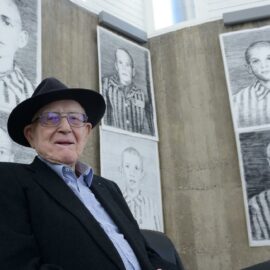
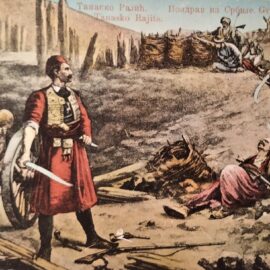
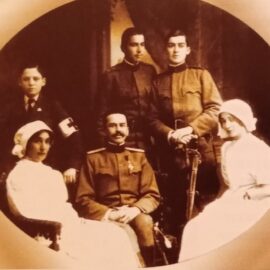
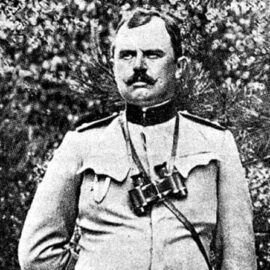
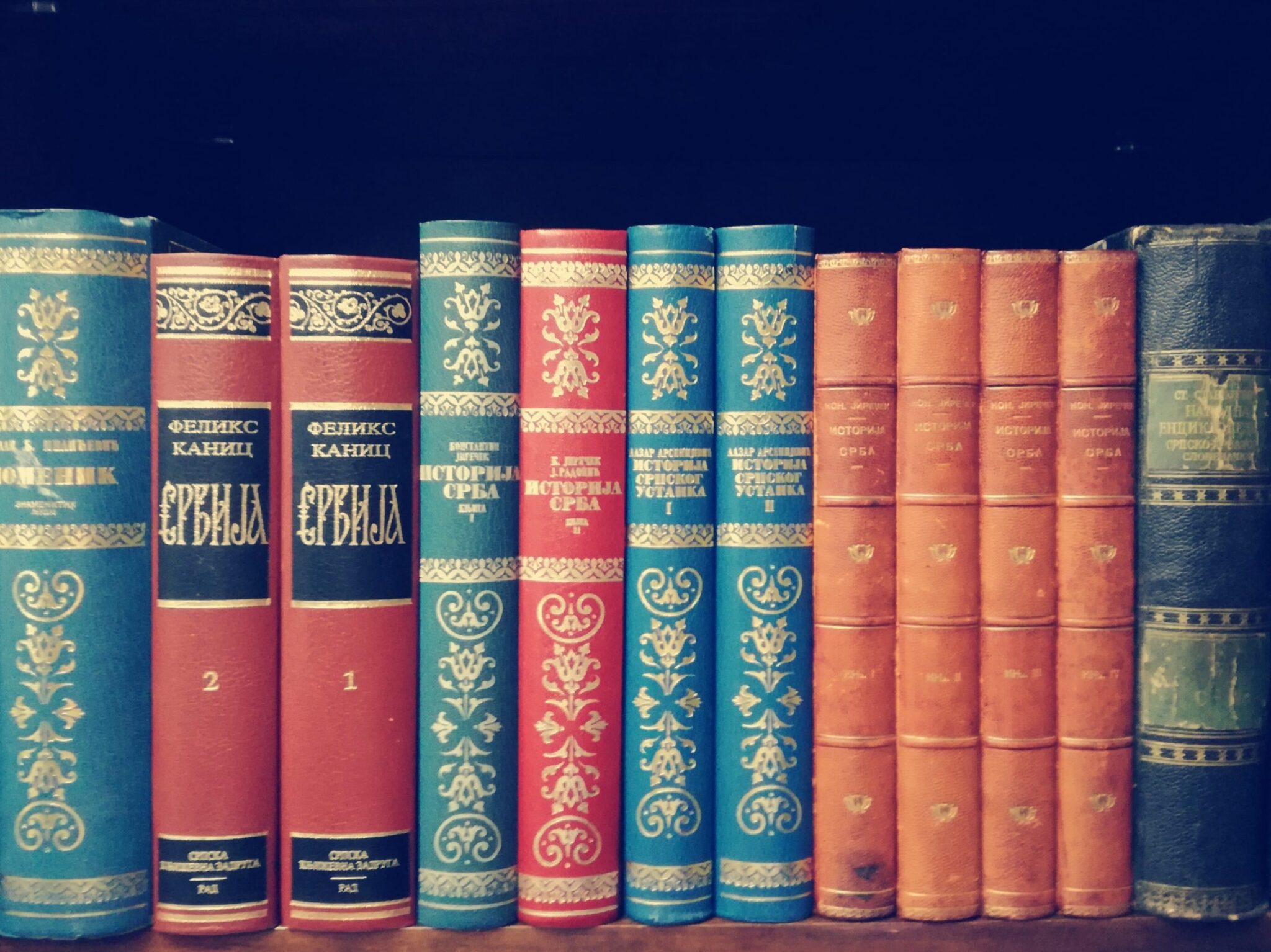
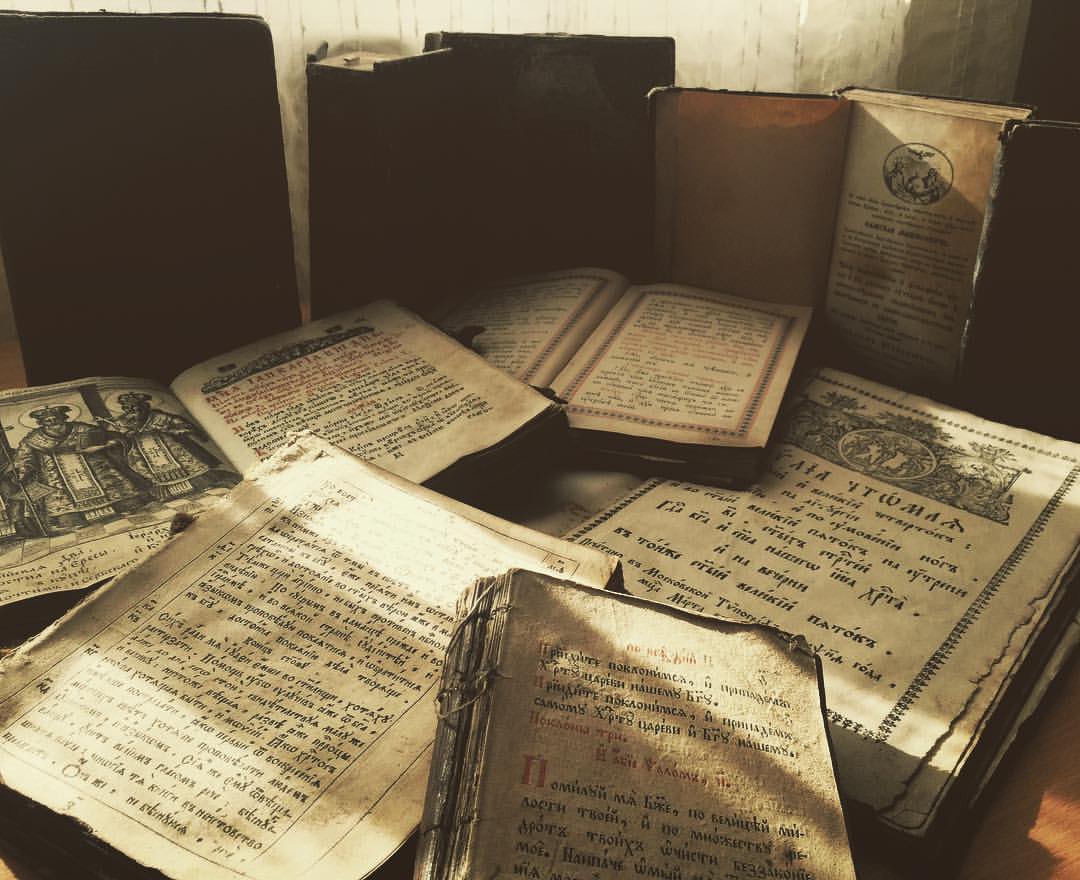


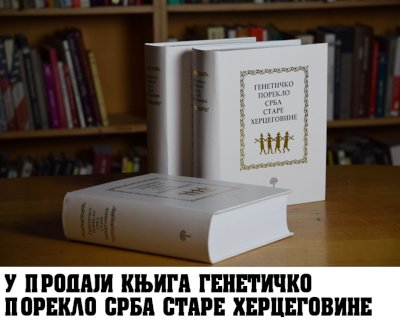
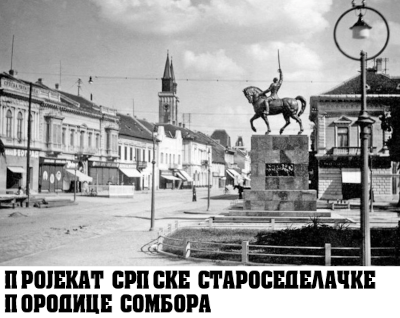
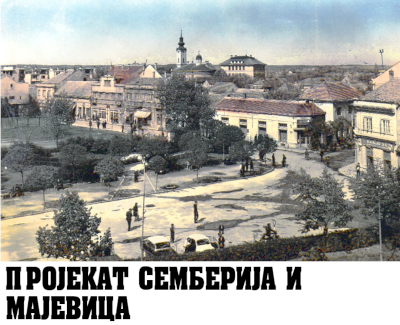
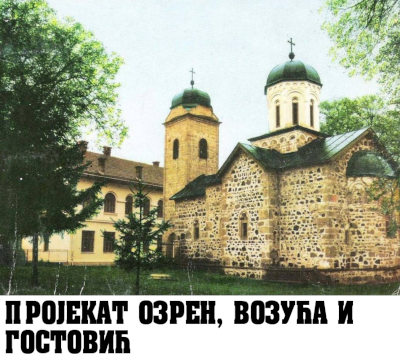
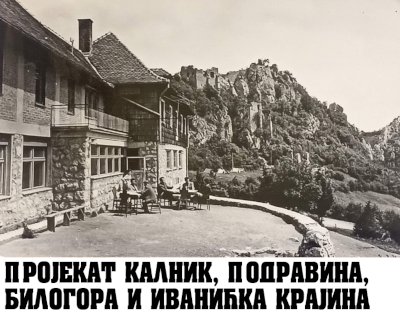
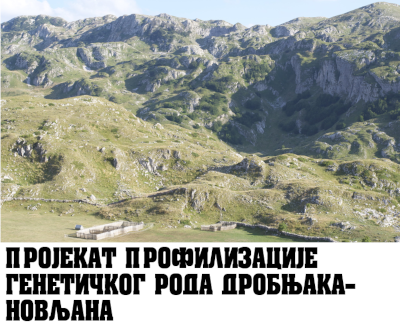
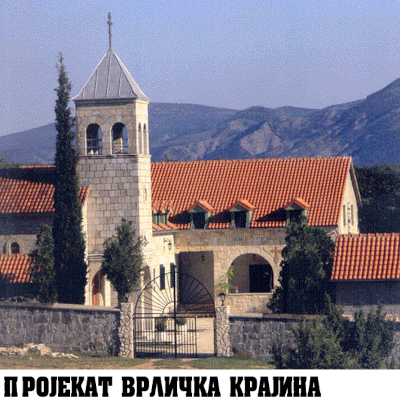

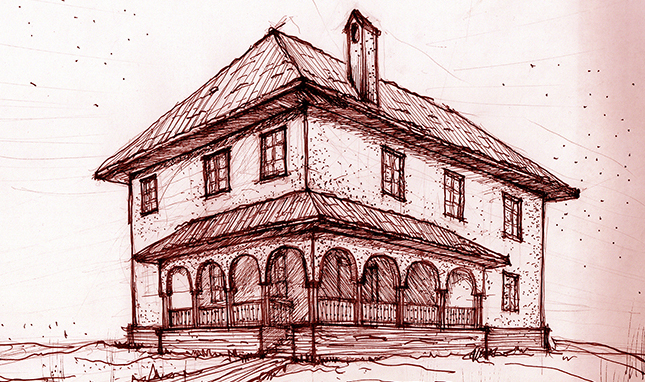

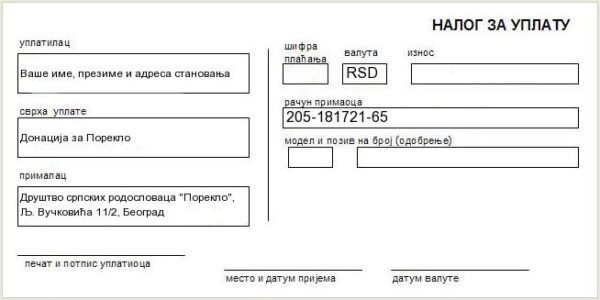
Komentari (0)